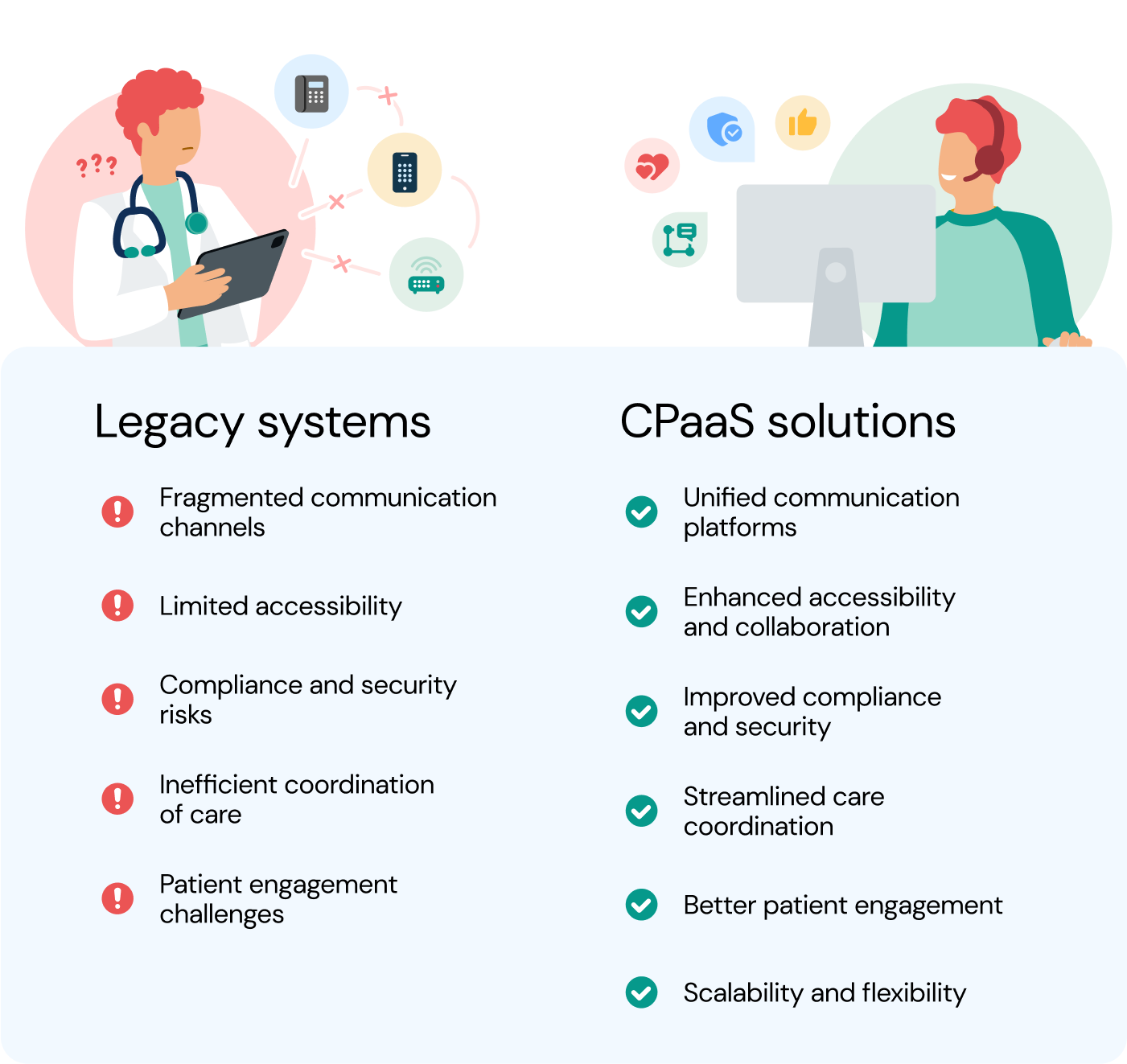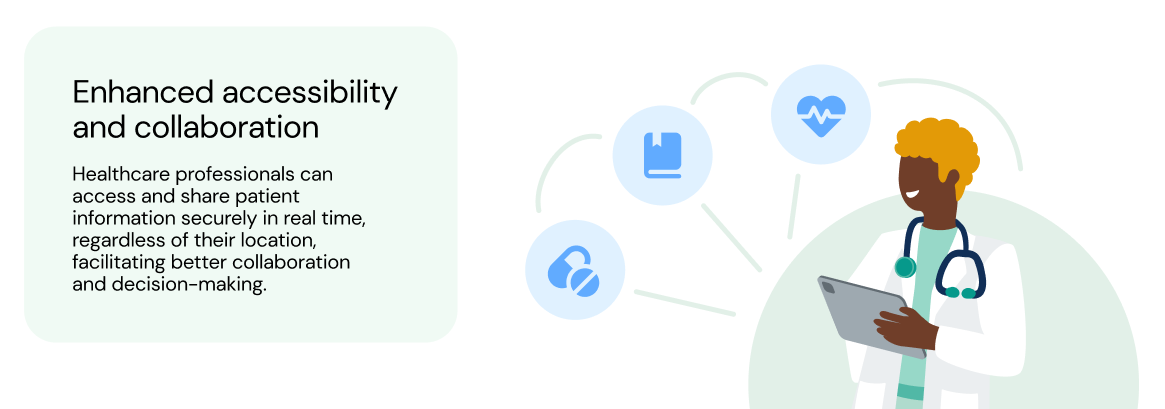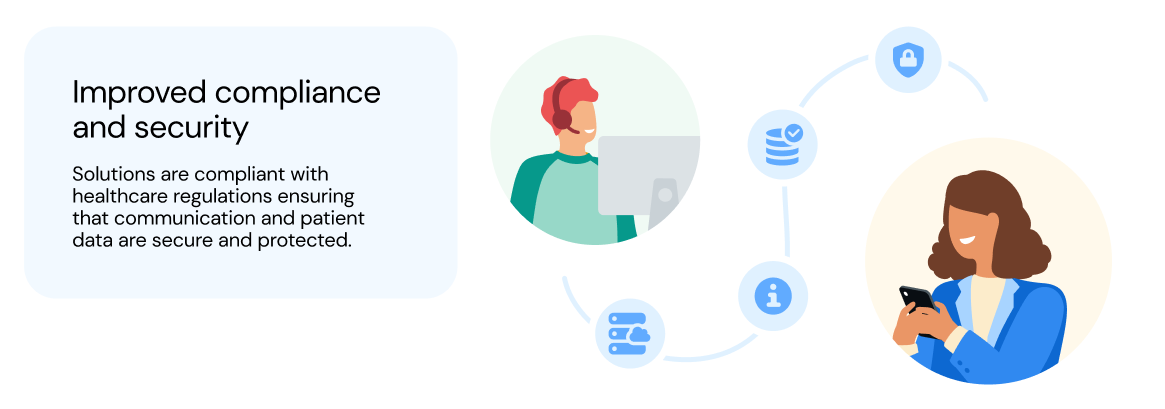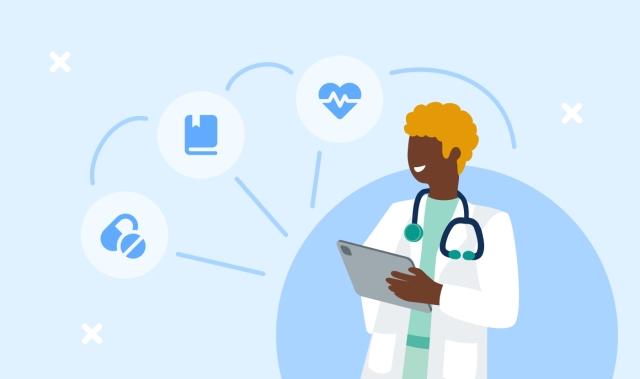Communication is fundamental in the healthcare sector. According to the Institute for Healthcare Advancement, communicating information that patients can understand and use directly leads to better patient management, better healthcare utilization, and higher patient satisfaction. They list the 5 Cs of healthcare communication as being Caring, Customized, Clear, Concise, and Correct.
There is, however, a 6th C: Connected.
Connected health takes patient communication to another level. It’s all about using technology to safely and securely enhance the medical experience via wireless, cloud-based solutions. It covers different aspects like:
-
telehealth, where you can talk to doctors over the internet
-
remote patient care, which lets you get medical help without having to be in the same place as the healthcare provider
-
managing illnesses and lifestyle adjustments
-
using your mobile phone for health-related tasks
It helps connect doctors with patients or other doctors, and even lets patients chat with each other. But most of all, it’s a smart alternative to updating legacy systems still in place at healthcare centers.
And it’s all powered by Communication Platforms as a Service (CPaaS). CPaaS provides the infrastructure for healthcare providers to offer flexible and scalable telehealth, remote monitoring, and much more.
Let’s explore why connected health is the answer to updating legacy systems, how CPaaS provides the necessary backbone for it to function, and why it’s revolutionizing the way providers care for those that need it most: the patients.
Moving away from legacy systems
Healthcare communications often struggle with functionality and adaptability issues presented by legacy systems. These systems can cause problems for medical organizations and their patients for a variety of reasons:
-
Fragmented communication channels: Traditional methods often involve a mix of pagers, fax machines, landlines, and siloed email systems, leading to fragmented and inefficient communication.
-
Limited accessibility: Healthcare providers may not have immediate access to patient data or the ability to communicate in real time due to the limitations of legacy systems.
-
Compliance and security risks: Legacy systems might not meet current healthcare regulations for data protection and patient privacy, such as the Health Insurance Portability and Accountability Act (HIPAA) in the United States, posing risks of data breaches and compliance violations.
-
Inefficient coordination of care: Coordinating patient care across different departments and specialists can be slow and prone to errors, impacting patient outcomes.
-
Patient engagement challenges: Engaging patients effectively through legacy methods can be difficult, leading to lower satisfaction rates and adherence to treatment plans.
So why do healthcare providers often stick with their outdated systems? It boils down to a few thorny issues: Upgrades can interrupt patient care, and not everyone's got the resources or expertise to pull off such a big change. Plus, these old systems represent significant capital investments that are tangled up with the current setup, making untangling them tricky, especially with all the compliance issues to consider.
There's also the worry of losing custom modifications made over the years, and let’s face it, a lot of administrators just don't like change. When a system is still doing its job without causing trouble, many think, "Why bother fixing what isn't broken?" Tackling these hurdles requires a thoughtful approach to balance the push for new tech with continuing to deliver stable and secure healthcare.

Adopting connected healthcare communication tools
The transition away from legacy systems isn’t just about adopting new technologies. It’s also about rethinking the way healthcare is delivered. The primary goal of providing digital health services is to improve patient outcomes and wellbeing.
Connected health communication solutions are at the forefront of this change, offering more dynamic and responsive ways to engage with patients. By embracing these technologies, healthcare providers can overcome the limitations of traditional systems and move towards a more integrated and patient-centered approach to care. These tools represent a step forward in making healthcare more accessible and efficient: Operations run smoother, data is safer, and adhering to new regulations is hassle-free.
CPaaS solutions fuel connected health, providing the infrastructure necessary to drive flexible and scalable communication solutions. Let’s take a look how:
-
Unified communication platforms: CPaaS integrates various communication channels (SMS, email, voice, video, fax, and chat apps) into a single platform, enhancing the efficiency and effectiveness of communication among healthcare providers and with patients.
-
Enhanced accessibility and collaboration: Healthcare professionals can access and share patient information securely in real time, regardless of their location, facilitating better collaboration and decision-making.
-
Improved compliance and security: Solutions are compliant with healthcare regulations ensuring that communication and patient data are secure and protected.
-
Streamlined care coordination: CPaaS powers seamless communication and information exchange across different healthcare services and departments, improving the coordination of patient care and reducing the risk of errors.
-
Better patient engagement: Healthcare providers can implement personalized and automated communication strategies with CPaaS, such as appointment reminders, follow-up messages, and health tips, improving patient engagement and adherence to care plans.
-
Scalability and flexibility: Easily scale to meet your growing needs with a CPaaS solution, allowing for the addition of new communication features and services as required.
Real-time communication: benefits and challenges
Real-time communication technology is the backbone of connected health. Essentially, it's bridging the gap we often see between traditional healthcare and telehealth, mainly focusing on making healthcare more accessible and convenient for everyone. Through telehealth, patients can now get medical advice, consult with doctors, and even undergo therapy sessions right from their homes using video conferencing.
Benefits of telehealth
-
Limited physical contact reduces exposure to communicable diseases
-
Virtual visits ensure healthcare is provided wherever the patient is
-
Travel, time off from work, and the need for childcare are significantly reduced
-
Provides increased access to specialists who are located far away from your hometown

Another exciting development is remote monitoring. Doctors can now keep an eye on their patients' health in real time, thanks to technology that sends data straight to them. This means they can diagnose issues more quickly, take immediate action, and save a lot of time in the process.
Benefits of remote monitoring
-
Accessibility: Patients in remote or underserved areas can now receive the same level of care as those in urban centers.
-
Efficiency: Automating routine follow-ups and health checks frees up valuable time for healthcare providers.
-
Early intervention: Real-time data collection allows for quicker response to health changes, potentially saving lives.
-
Patient empowerment: With direct access to their health information, patients can take a more active role in managing their well-being.
-
Cost-effectiveness: Reducing the need for in-person visits can significantly cut down healthcare costs.
Challenges to implementation
We’ve outlined the benefits of a connected health solution here, but there are also certain challenges to consider:
-
Data security: With sensitive health data being transmitted, robust cybersecurity measures are non-negotiable.
-
Technology adoption: Both patients and healthcare providers need to be comfortable and proficient with the new tools.
-
Regulatory compliance: Navigating the complex web of healthcare regulations requires diligence and expertise.
-
Integration concerns: CPaaS solutions must seamlessly integrate with existing healthcare systems for a smooth operation.
-
Network reliability: Consistent and reliable internet connectivity is crucial for uninterrupted monitoring.
Security, data privacy, and compliance
Security, data privacy, and compliance are at the heart of connected health, patient trust, and care quality. CPaaS tools ensure that sensitive information remains protected while also meeting strict regulatory requirements.

Security: A foundation of trust
With cyber threats becoming increasingly sophisticated, healthcare providers must ensure that every message, call, and piece of shared data is protected. Advanced encryption protocols, such as TLS and SRTP, to secure data in transit are essential deliverables from CPaaS providers. Additionally, for data at rest, providers employ tight encryption standards to ensure that patient information can’t be accessed by anyone without permission.
Data privacy: Upholding patient rights
Data privacy in healthcare isn’t just about compliance; it’s about upholding the dignity and rights of patients. CPaaS platforms are designed to comply with data privacy laws such as HIPAA in the U.S. or the General Data Protection Regulation (GDPR) in the EU. These platforms provide healthcare organizations with the tools they need to manage consent, patient preferences, and data access rights, ensuring that patient information is shared and used appropriately, and only with the necessary consent.
Compliance: Aligning with healthcare standards
Compliance with healthcare regulations is a moving target, with standards constantly evolving to address new risks and technologies. CPaaS providers must therefore be nimble, adapting to changes in regulations quickly to help healthcare organizations stay compliant. This includes not only technical measures but also ensuring that the healthcare providers’ staff is trained and aware of the compliance requirements.
Regular audits, risk assessments, and compliance certifications are part of the CPaaS package, offering healthcare providers peace of mind that they're meeting their legal and ethical obligations. These tools often come with built-in reporting and logging capabilities, too, enabling healthcare providers to easily provide evidence of compliance should it be required by regulators.
The future of connected health
As we look to the future, the need for healthcare providers to upgrade their communication infrastructure becomes increasingly clear. With the rise of connected health, patients are no longer passive recipients of care but active participants in their health journey. This shift requires a foundation of reliable, secure, and flexible communication tools that can support a wide range of services, from virtual consultations to remote monitoring, all while remaining compliant with regional laws and regulations. CPaaS offers all of that, but more importantly the right CPaaS provider can make the transition painless.
Sinch is here to help you through the process. The future of healthcare is digital, and at its heart is the need for strong, reliable communication infrastructure that can support this new era of connected care. Get in touch with our experts today to learn more.



